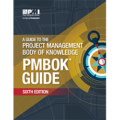
A project manager must deal with many different issues on a daily basis, for example,
- The project deadlines are firm but the resources are occupied.
- The deadlines have been tightened but the quality must stay the same.
- The customer wants a higher quality product at the same price.
In order to balance these often competing objectives, the Project Management Body of Knowledge (PMBOK) specifies the creation of a Schedule Management Plan.
Schedule Management Plan
The Schedule Management Plan, a component of the overall Project Management Plan, is created prior to the creation of the project schedule itself. It contains the overall direction and strategy regarding the project schedule.
Here is a checklist for development of a Schedule Management Plan:
- How will the schedule be developed?
The type of software that will be used can be identified as well as the person creating the schedule. Any other methodology such as estimating techniques or resource sharing methods. - How aggressive will it be?
The strategy for contingencies and reserves can be specified, for example which tasks will have a contingency and how big will they be. Also, what circumstances would constitute a situation in which the reserves will be tapped. - Who will be notified?
Unique stakeholders to the schedule can be identified, as well as their communication needs. A distribution list for the final schedule and/or revisions can be determined. Regular schedule performance reporting needs can be established. - When and how will the schedule performance be measured?
Generally, earned value analysis will produce a schedule variance (SV) and Schedule Performance Index (SPI), as well as a few other numbers which give the project manager insight into how far ahead or behind the project it. Weekly (or other) progress meetings ensure the project team is up to speed with the project schedule and identifies progress to be achieved within the forthcoming progress period. - When (not if!) the project is behind schedule, what actions will be taken to rectify it?
There are a few options. The highest to lowest priority can be specified in the schedule management plan.- Crashing the schedule means adding more resources.
- Fast tracking means performing tasks in parallel that would otherwise be done in sequence.
- Changing the scope of the work to eliminate unnecessary tasks.
- Updating the schedule, which requires the approval of the project sponsor.
- What resources are required, and how will their schedules be managed?
Often projects are constrained by one or several major resources, like a piece of specialty construction equipment. Maybe these major resources need some extra contingencies since the whole project moves ahead or behind with their availability. - What are the assumptions embedded within the schedule?
Every project schedule contains assumptions, from the underlying conditions to the external requirements. If these are not laid out in the plan, the project stakeholders will assume they haven’t been considered which does not bode well when project changes are encountered.
Creating a Project Schedule
Because the PMBOK specifies that the Schedule Management Plan and the project schedule are not necessarily connected, the project model can be thought of as containing the project schedule within the overall Project Management Plan. The Schedule Management Plan, a separate part of the overall Project Management Plan, identifies how the schedule changes will be handled and/or managed, but the project schedule itself resides separately alongside it.
A project management plan without a professionally built, resource levelled project schedule is not that effective in ensuring a positive outcome for the project.
There are six steps to creating a professional project schedule:
- Dividing the project into tasks
- Determining the task sequencing and relationships between tasks
- Estimating task resources
- Estimating task durations
- Building the initial schedule
Schedule Control
An amazing project schedule that collects dust on the shelf is of no benefit to anyone. Fortunately, the PMBOK is extensive in the area of schedule control and its well travelled methods will make meeting deadlines almost effortless. The project deadlines can meet themselves if you perform the right sequence of tasks. This secret is called Earned Value Analysis.
Firstly, the project manager must set up a status period length. I recommend one week, because for almost any size project a one week progress meeting provides a benefit without being too onerous.
The content of the weekly status meetings depends on what works for the project and the project manager. It can be a full project team meeting, or simply the project manager updating the project stats. But it must be done. Books have been written about the inefficiency of meetings, and I don’t disagree with them. But effective project teams require collaboration between people and that means they must communicate, both sideways to other team members and upwards to the project manager. A regular status meeting is a necessity.
In order to use professional project controls to ensure deadlines are met, the process goes something like this:
- The project schedule must be achievable and resource levelled. See above.
- Near the end of each status period, the project manager determines the percent complete of each task via educated guesses or discussions with project team members.
- Prior to the status meeting, the project manager uses the percent complete estimates to calculate the Schedule Variance (SV) and Schedule Performance Index (SPI). There are equivalent items related to the project’s cost (Cost Variance and Cost Performance Index) but we are focused on schedule here. Earned value analysis contains several other values which you might be interested in, but these two (plus the two cost items) are the minimum.
- At the end of the status period, the status meeting contains the following agenda items:
- Schedule and cost variances. Communicate the SV and SPI, and discuss why is the project ahead or behind schedule and/or cost.
- Tasks achieved last week (or whatever status period length). The project schedule is displayed or distributed and discussed.
- Tasks to be performed this week. This also keeps project team members accountable.
- A look forward to the end of the project. This is to keep the big picture in everyone’s mind and help motivate people by reminding them why they are doing what they’re doing.
- The above four agenda items are summarized into a project status form, which is distributed to the relevant parties and filed into the project management plan.
For most small projects the project manager can spend 1 hour per week determining the SV, SPI, CV, and CPI, and then distribute them to the project team in a project status meeting. Everyone will be up to speed with where they should be and what they should be doing. Any potential issues that come up and can be addressed via the methods outlined in the schedule management plan.
Project Management Software
As you can imagine, the proper planning and control of project schedules is made much easier with software. Software is heavily dependent on the industry and the preference of the individual project manager. In the technical and engineering fields, Microsoft Project is prominent. In construction, Primavera Project Planner is the standard. In the I.T. industry, web based project management using kanban boards is the norm.
Whatever you choose, learn it well. Make sure it has a strong project control element, because it is easy to sink into a routine where the software is used mostly as a data tool that gives you a whole bunch of metrics but doesn’t give you any help to get the project back on track.






